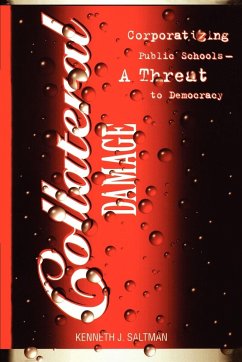Nicht lieferbar

O Day of Wrath: A Case Study in Collateral Damage and Psychological Effects
Versandkostenfrei!
Nicht lieferbar
One of the realities of war is collateral damage. Modern war fighters make every effort to avoid unwarranted loss of life and destruction of property that is not part of the "target set" for a given operation. Yet, during World War II when "precision bombing" was less than precise, many cities endured many devastating losses. Cathedrals, museums, civic buildings including countless cultural treasures were destroyed and lives were changed forever. This case study traces western civilization's cultural responses to the tragedy and loss of war by examining the bombings of the British city of Cove...
One of the realities of war is collateral damage. Modern war fighters make every effort to avoid unwarranted loss of life and destruction of property that is not part of the "target set" for a given operation. Yet, during World War II when "precision bombing" was less than precise, many cities endured many devastating losses. Cathedrals, museums, civic buildings including countless cultural treasures were destroyed and lives were changed forever. This case study traces western civilization's cultural responses to the tragedy and loss of war by examining the bombings of the British city of Coventry and the German city of Dresden. The Luftwaffe bombed Coventry in 1940 during the Battle of Britain. Near the end of the war in 1945, the Allies bombed Dresden during the Combined Bomber Offensive. Each city sustained a significant first level effect of collateral damage, including their historic cathedrals: Coventry Cathedral (The Church of St. Michael), the Kreuzkirche (Church of the Holy Cross), and the Frauenkirche (Church of Our Lady) both in Dresden. Following the bombing campaigns, some unexpected and unintended second and third level psychological effects occurred. The second level effects were major musical compositions. This work has been selected by scholars as being culturally important, and is part of the knowledge base of civilization as we know it. This work was reproduced from the original artifact, and remains as true to the original work as possible. Therefore, you will see the original copyright references, library stamps (as most of these works have been housed in our most important libraries around the world), and other notations in the work. This work is in the public domain in the United States of America, and possibly other nations. Within the United States, you may freely copy and distribute this work, as no entity (individual or corporate) has a copyright on the body of the work. As a reproduction of a historical artifact, this work may contain missing or blurred pages, poor pictures, errant marks, etc. Scholars believe, and we concur, that this work is important enough to be preserved, reproduced, and made generally available to the public. We appreciate your support of the preservation process, and thank you for being an important part of keeping this knowledge alive and relevant.















